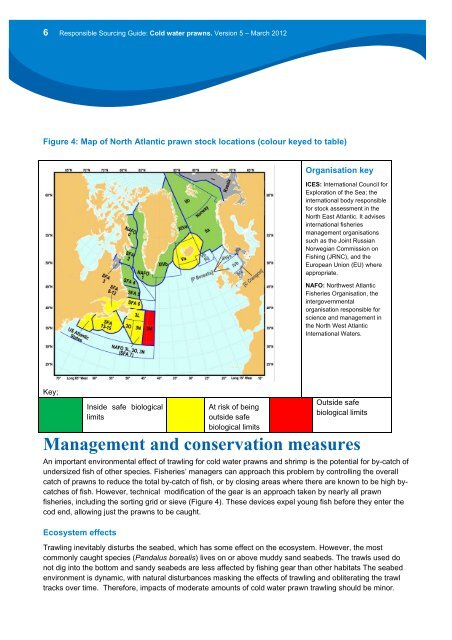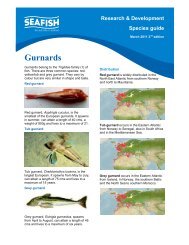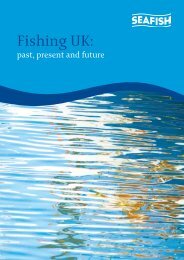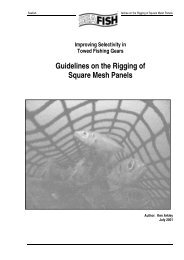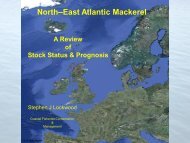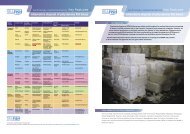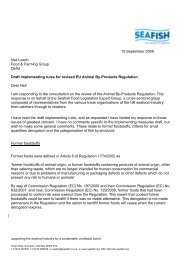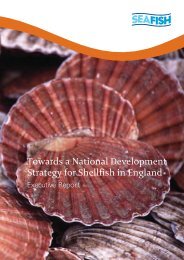You also want an ePaper? Increase the reach of your titles
YUMPU automatically turns print PDFs into web optimized ePapers that Google loves.
6 Responsible Sourcing Guide: <strong>Cold</strong> <strong>water</strong> <strong>prawns</strong>. Version 5 – March <strong>2012</strong><br />
Figure 4: Map of North Atlantic prawn stock locations (colour keyed to table)<br />
Organisation key<br />
ICES: International Council for<br />
Exploration of the Sea; the<br />
international body responsible<br />
for stock assessment in the<br />
North East Atlantic. It advises<br />
international fisheries<br />
management organisations<br />
such as the Joint Russian<br />
Norwegian Commission on<br />
Fishing (JRNC), and the<br />
European Union (EU) where<br />
appropriate.<br />
NAFO: Northwest Atlantic<br />
Fisheries Organisation, the<br />
intergovernmental<br />
organisation responsible for<br />
science and management in<br />
the North West Atlantic<br />
International Waters.<br />
Key;<br />
Inside safe biological<br />
limits<br />
At risk of being<br />
outside safe<br />
biological limits<br />
Outside safe<br />
biological limits<br />
Management and conservation measures<br />
An important environmental effect of trawling for cold <strong>water</strong> <strong>prawns</strong> and shrimp is the potential for by-catch of<br />
undersized fish of other species. Fisheries’ managers can approach this problem by controlling the overall<br />
catch of <strong>prawns</strong> to reduce the total by-catch of fish, or by closing areas where there are known to be high bycatches<br />
of fish. However, technical modification of the gear is an approach taken by nearly all prawn<br />
fisheries, including the sorting grid or sieve (Figure 4). These devices expel young fish before they enter the<br />
cod end, allowing just the <strong>prawns</strong> to be caught.<br />
Ecosystem effects<br />
Trawling inevitably disturbs the seabed, which has some effect on the ecosystem. However, the most<br />
commonly caught species (Pandalus borealis) lives on or above muddy sand seabeds. The trawls used do<br />
not dig into the bottom and sandy seabeds are less affected by fishing gear than other habitats The seabed<br />
environment is dynamic, with natural disturbances masking the effects of trawling and obliterating the trawl<br />
tracks over time. Therefore, impacts of moderate amounts of cold <strong>water</strong> prawn trawling should be minor.


